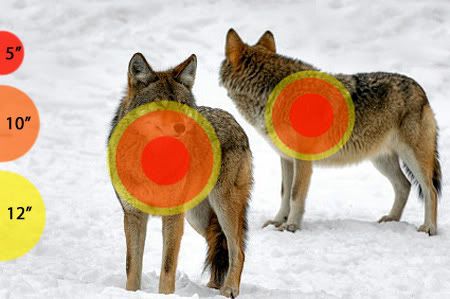GC quote, "Most shotgun guys aren't missing coyotes by inches but rather by feet."
this is me! Cause of the three feet miss at 35 yards, broadside shot with a coyote hauling freight, will be that I will stop my swing, especially if a couple of coyotes are coming in at the same time. I have noticed over the years that if a coyote turns his head sideways and looks at me as I am following through, those killer eyes of his distract my attention on swing and follow through.
I read pressure signs on shot shells just like a rifle cartridge. Watch the depth of the lettering, watch the thickness of the rim. When you start to see the thickness of the rim increase, It is real obvious when you are into high pressures. Often, a high base will crack. I have had the Rim crack all the way around from multiple firings of high pressure loads. Primers will fall out of the hulls also. Some primers are larger in dia than others, be aware of this if you are scrounging for shot shell primers.
I work up shot shell loads, increasing powder charge 1.0g at a time(blue dot), carefully examine the hull and primer, then retrieve the wad. Fired wads tell a great story about the load, and how it builds pressure, and durability as it constricts going through the choke.
If you start to see plastic streaking in your choke or Barrel, your patterns will be inconsistent.
Patterns are usually blown on high pressure loads, usually.
I had a nut job for a hunting partner that liked to shoot over loads. He blew the bottom out of two 870's with HS6 and heavy loads in a 12ga. I told him that the browning BPS was a stronger shot gun, then he sized one up solid while we were shooting pigeons.
Since we hunted with 3-4 guys in the truck, we did not have room to carry everyone's guns. So, often, we would defer to one guy's or another's shotgun or two to take along. We usually would carry two rifles and two shotguns for 4 guys. Guys miss a lot of coyotes with shotguns because they are not familiar with the shotgun, hard to believe. I have had a couple of guys refuse to shoot at a running coyote, they wanted standing shots. More often than not, a guy has no idea of how his shotgun patterns at 40 yards, they will start looking at you like you are talking the greek language when you start talking patterns.
I got a good laugh at a really nice guy that I carried hunting with his Stevens double barrel that his dad had given to him. I had 1 1/2 oz of #4 buck loaded at 1300 and after he had fired about 6 shells, he put the gun away saying, "that I think that I prefer my rifle better". His arm was GREEN!!! I put him on a dove field on the 2nd season that starts in Thanksgiving, and after 5 boxes of Wal Mart Rem Dove loads, he was begging for mercy.
I would bet my house that 1 1/4 oz of TSS at 1325 fps choked properly will take all coyotes at 40-45 yards.







